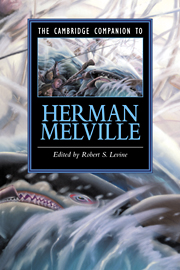Book contents
- Frontmatter
- Introduction
- 1 “Race” in Typee and White-Jacket
- 2 The Tambourine in Glory
- 3 Moby-Dick as Revolution
- 4 Pierre's Domestic Ambiguities
- 5 A----!
- 6 Melville the Poet
- 7 Melville's Traveling God
- 8 Melville and Sexuality
- 9 Melville, Labor, and the Discourses of Reception
- 10 Bewildering Intertanglement
- 11 Melville and the Avenging Dream
- Afterword
- Selected Bibliography
- Index
- Series List
11 - Melville and the Avenging Dream
Published online by Cambridge University Press: 28 May 2006
- Frontmatter
- Introduction
- 1 “Race” in Typee and White-Jacket
- 2 The Tambourine in Glory
- 3 Moby-Dick as Revolution
- 4 Pierre's Domestic Ambiguities
- 5 A----!
- 6 Melville the Poet
- 7 Melville's Traveling God
- 8 Melville and Sexuality
- 9 Melville, Labor, and the Discourses of Reception
- 10 Bewildering Intertanglement
- 11 Melville and the Avenging Dream
- Afterword
- Selected Bibliography
- Index
- Series List
Summary
It was something, I guessed, in the primal plan; something like a complex figure in a Persian carpet. He highly approved of this image when I used it, and he used another himself. “It's the very string,” he said, “that my pearls are strung on.
Henry James, “The Figure in the Carpet”Weary with the invariable earth, the restless sailor breaks from every enfolding arm, and puts to sea in height of tempest that blows off shore. But in long night-watches at the antipodes, how heavily that ocean gloom lies in vast bales upon the deck; thinking that that very moment in his deserted hamlet-home the household sun is high, and many a sun-eyed maiden meridian as the sun. He curses Fate; himself he curses; his senseless madness, which is himself. For whoso once has known this sweet knowledge, and then fled it; in absence, to him the avenging dream will come.
Melville, Pierre“He” in James's parable of authors and readers is novelist Hugh Vereker, “I” an unnamed young critic who gives himself to deciphering what Vereker calls “the organ of life” in his work (James 234). "A triumph of patience, of ingenuity" (James 231), Vereker's "figure in the carpet" is discoverably present in his novels, and among James's objects in the story is the professed one of rebuking a criticism that "is apt to stand off from the intended sense of things, from such finely-attested matters, on the artist's part, as a spirit and a form, a bias and a logic, of his own."
- Type
- Chapter
- Information
- The Cambridge Companion to Herman Melville , pp. 250 - 278Publisher: Cambridge University PressPrint publication year: 1998

